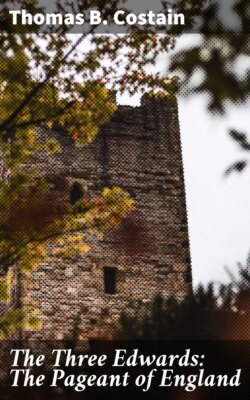Читать книгу The Three Edwards: The Pageant of England - Thomas B. Costain - Страница 12
На сайте Литреса книга снята с продажи.
3
ОглавлениеTable of Contents
It became evident that Edward had something of his builder father in him when he turned his attention to the castles of England. He realized that they were ill planned and that something must be done about them. The Norman stronghold had been built for one purpose only, defense. It was a grim structure of high, thick walls surrounded by a moat. Inside there were no provisions for the comfort of the occupants. The sanitary arrangements were crude, in fact almost nonexistent; the bedchambers were little more than holes sunk into the walls and lacking light and ventilation. It had now become apparent that even for defense this type of castle was not the best. It lacked the means of interfering with besiegers. Archers who had to station themselves at narrow slits in the immensely thick walls had no chance of directing a deadly fire on attacking forces. By the later part of the reign of Henry III a move was being made to have bastions at the corners of all defense walls so that a cross fire could be maintained by the archers.
Edward now began to build an entirely different type of castle. It was on what was called the “concentric” system, consisting of several lines of defense which had to be passed in turn. The great strongholds he raised in Wales—Caernarvon and Conway in particular—were mighty fortresses and so substantially raised that much of the masonry is still intact. In addition to being practical from a defense standpoint, they displayed a marked advance in the living quarters. Conway, which became a favorite with the royal family, was quite sumptuous, with a stately great hall and chambers with plastered walls and glass windows.
But even while Edward spent his time and thought on his castles, not to mention the great cost of them, the trend in the world at large was running the other way. Men were beginning to discover comfort and were no longer willing to exist in stately pig wallows. The manor house was being developed. Gradually the homes of the nobility would be built with an eye to ease and dignity in living. Where it was felt that more security was needed than a brick manor house could afford, a compromise was effected by raising the walls higher and giving them crenelated tops. In time it became necessary to have the royal assent to this method of fortifying a country house. The rapidity with which the tendency to live in fortified castles went out is best demonstrated by the number of permits to crenelate a manor house issued in consecutive reigns. There were 181 granted in the reign of Edward III, sixty by Richard II, eight by Henry IV, one by Henry V.
